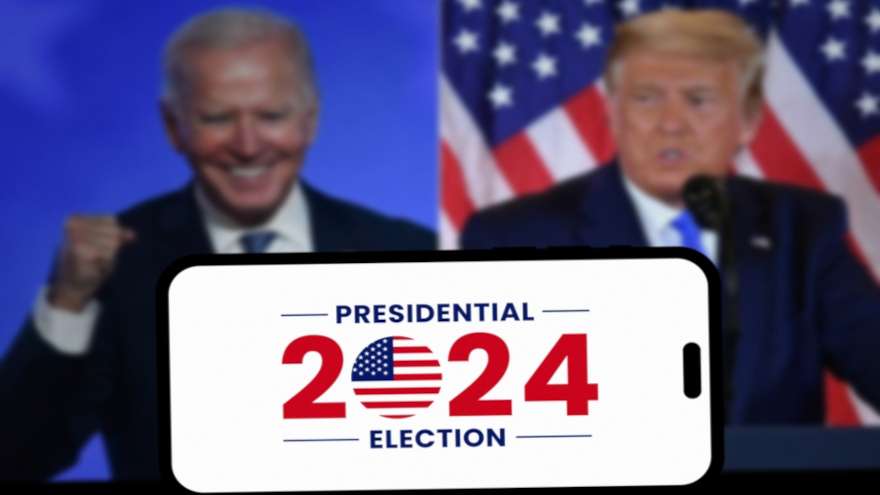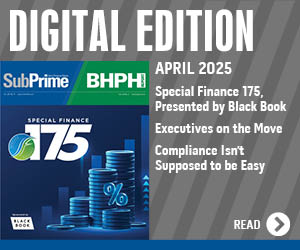LegalShield spots consumer stress intensifying, especially in battleground states

Image by QubixStudio / Shutterstock.com
As President Joe Biden and Donald Trump had their first debate last week, LegalShield used its latest Consumer Stress Legal Index (CSLI) to take a closer look at what’s happening with consumers in battleground states as well as providing an analysis of overall consumer financial status.
Nationally, LegalShield’s benchmark CSLI remained almost flat in May at 62.8, just 0.1 points below April.
According to a report that accompanied the overall index reading, LegalShield indicated the consumer finance subindex moved up 2.0 points in May to 102.1. The subindex is down 2.9% year-over-year.
Analysts explained the consumer finance subindex reflects the number of intakes related to consumer finance issues such as billing disputes, vehicle repossessions and payday loans, as a share of total intakes across all areas of law.
“The consumer finance subindex moved up for a second straight month in May, consistent with a Q2 increase each of the last 10 years,” LegalShield said in the report. “Continued elevated interest rates could contribute to the rise as household debt mounts and restructured payment plans on debt contribute to additional challenges for consumers down the road.”
Analysts reiterated the bankruptcy subindex reflects the number of intakes related to bankruptcy as a share of total intakes across all areas of law.
“The bankruptcy subindex historically leads the total number of bankruptcy filings as reported by the U.S. court system by two quarters, with a 0.98 correlation,” LegalShield said in its report. While relatively flat month-over-month, the bankruptcy subindex is on a steady rise since Q4 of 2021 after a sharp drop-off as pandemic relief funds hit in 2020. The bankruptcy subindex continues its steady climb, potentially back to pre-pandemic levels.”
With those overall readings in mind, LegalShield turned to a political prism to view its latest index.
Released monthly, the LegalShield Consumer Stress Legal Index is comprised of three subindices that reflect the demand for various legal services. LegalShield’s dataset includes more than 35 million consumer requests for legal assistance since 2002, averaging approximately 150,000 calls received monthly.
“The CSLI uncovers the daily challenges people are facing and provides actionable intelligence to help policymakers and industry leaders bridge those gaps,” analysts said.
For the third month running, LegalShield said its index indicated that consumer stress levels in battleground states are favoring a re-election for Biden. However, significant shifts in LegalShield’s bankruptcy and consumer finance indices hint at a possible reversal of that trend.
In the last five presidential election years, analysts explained a Democrat secured or maintained the White House when consumer stress in battleground states remained lower than the national average in October and November. In May, consumer stress in battleground states was lower than the national CSLI average which currently indicates a Democrat win in November.
“The three-month trend is pointing to victory for Democrats,” LegalShield senior vice president of consumer analytics Matt Layton said in a news release. “But, in 2016, battleground stress told a similar story until the trend reversed in late summer signaling a Republican win.”
For this election cycle, LegalShield said it is reviewing consumer stress levels on a politically geographic basis, separating red, blue, and purple battleground states. LegalShield classified states based on the outcome of the 2020 election.
Battleground states for 2024 including Arizona, Georgia, Michigan, Nevada, North Carolina, Pennsylvania and Wisconsin, according to LegalShield.
In May, analysts determined battleground state consumer stress ticked up by 0.4 points to 61.1, still 1.7 points below the national consumer stress level. Blue state stress increased by 1.2 points, maintaining a consistently higher level than the national index, while red state stress remained relatively flat with a 0.1-point increase, staying well below the national average.
Furthermore, LegalShield found that a closer examination of the subindices feeding the benchmark CSLI reveals an uptick in bankruptcy inquiries in battleground states, diverging from the national average.
Additionally, LegalShield noticed consumers in these states are experiencing significantly more stress related to consumer finance issues than those in red and blue states, with stress levels more than 12 points higher than in blue states and about 16 points higher than in red states.
In May, the consumer finance subindex in battleground states was more than 10 points higher than the national average, according to LegalShield tracking.
“If the bankruptcy or consumer finance subindex accelerates specifically in battleground states, as they did in 2016, the CSLI in battleground states is likely to rise above the national average,” Layton said. “The mixed results of the subindices are a sign that we might see a shift in the presidential frontrunner.”
Layton added one more observation about the overall trends LegalShield reported.
“We expect consumers to face continued stress with interest rates staying put,” Layton said. “With mounting debt, I expect our network of attorneys will be spending a lot of time on these household issues if we don’t see a change in the interest rate environment.”


